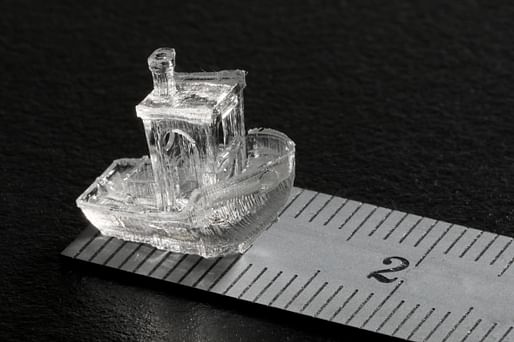

In recent years, 3D printing has become the go-to technology for designers looking to prototype and deploy new designs and products.
Researchers from École Polytechnique Fédérale de Lausanne (EPFL) have made a great (tiny) leap forward in the technology by creating a groundbreaking printing method that uses translucent liquid and a spinning container to produce tiny 3D prints.
According to a press statement by EPFL, "The new technique draws on the principles of tomography, a method used mainly in medical imaging to build a model of an object based on surface scans. The printer works by sending a laser through the translucent gel – either a biological gel or liquid plastic, as required."
As one can imagine, this new micro 3D-printing system has potential applications in a range of fields, including architecture.
3D printing company Readily3D is already in the process of creating a version of this print system that will be available for the market. The trick to making it all work is light, according to Paul Delrot, Readily3D’s CTO, who explains on the company website that "The laser hardens the liquid through a process of polymerization. Depending on what we’re building, we use algorithms to calculate exactly where we need to aim the beams, from what angles, and at what dose.”
Printing tiny, high-precision objects in a matter of seconds. Video © EPFL
Among the benefits of the technology, is the fact that the print can take place without the types of extraneous supports and braces used in conventional 3D printing. In addition, because the printing medium is light-activated, rather than built up in layers, the print takes shape nearly 10 times faster than conventional 3D printing methods, according to the company.
No Comments
Block this user
Are you sure you want to block this user and hide all related comments throughout the site?
Archinect
This is your first comment on Archinect. Your comment will be visible once approved.